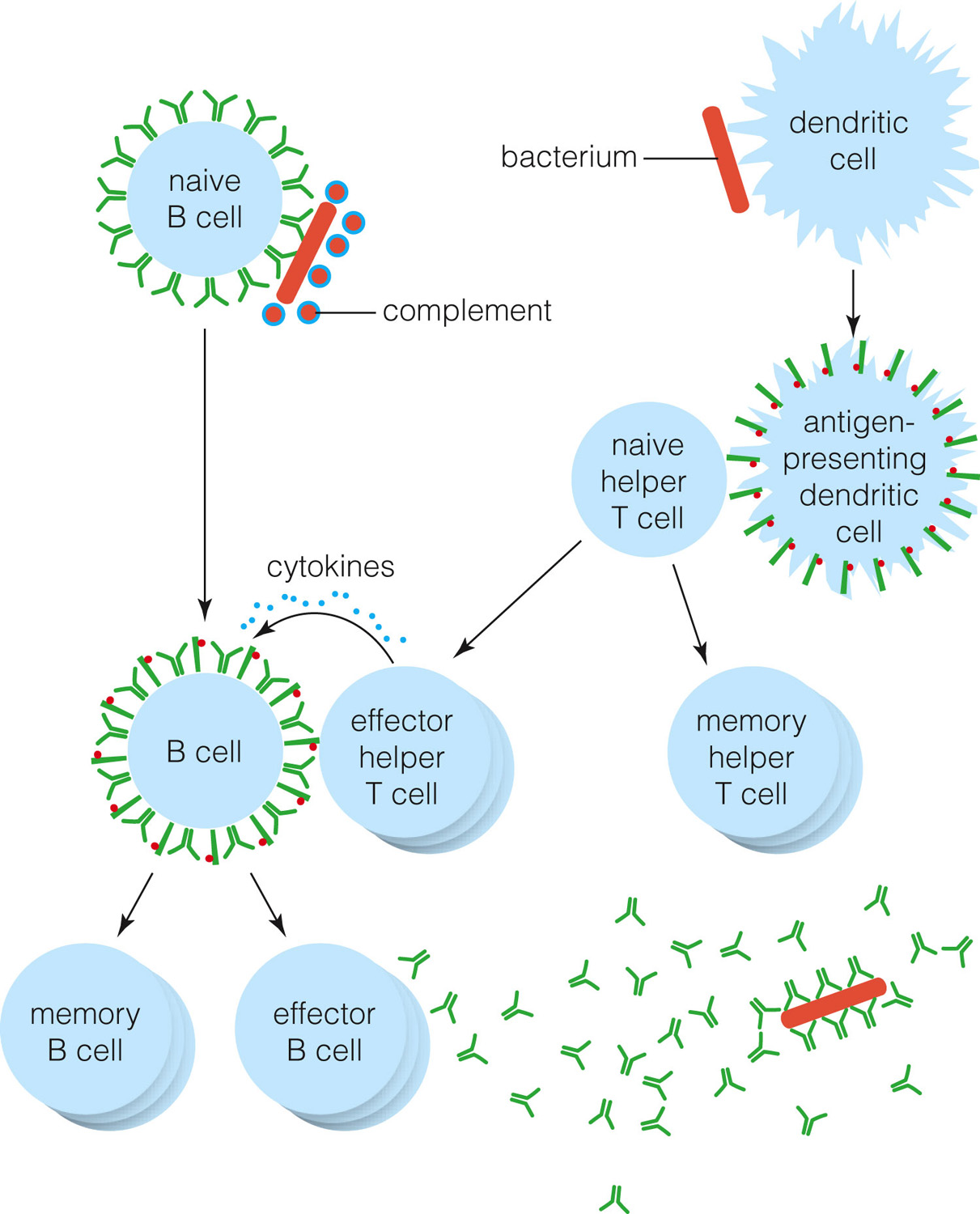 |
| Previous Image | Next Image |
| Description: 1. The B cell receptors on a naive B cell bind to an antigen on the surface of a bacterium. The bacterium’s complement coating triggers the B cell to engulf it. Fragments of the bacterium bound to MHC markers become displayed at the surface of the B cell. 2. A dendritic cell engulfs the same kind of bacterium that the B cell encountered. Fragments of the bacterium bound to MHC markers become displayed at the surface of the dendritic cell. 3. The antigen–MHC complexes on the dendritic cell are recognized by TCRs on a naive helper T cell. The two cells interact, and then the T cell begins to divide. Its descendants differentiate into effector helper T cells and memory helper T cells. 4. TCRs on one of the effector helper T cells recognize and bind to the antigen–MHC complexes on the B cell. Binding makes the T cell secrete cytokines. 5. The cytokines induce the B cell to divide again and again. Its many descendants differentiate into effector B cells and memory B cells. 6. The effector B cells begin making and secreting huge numbers of antibodies, all of which recognize the same antigen as the original B cell receptor. The new antibodies circulate throughout the body and bind to the bacteria. Picture Stats: Views: 635 Filesize: 284.84kB Height: 1500 Width: 1211 Source: https://biology-forums.com/index.php?action=gallery;sa=view;id=47530 |
